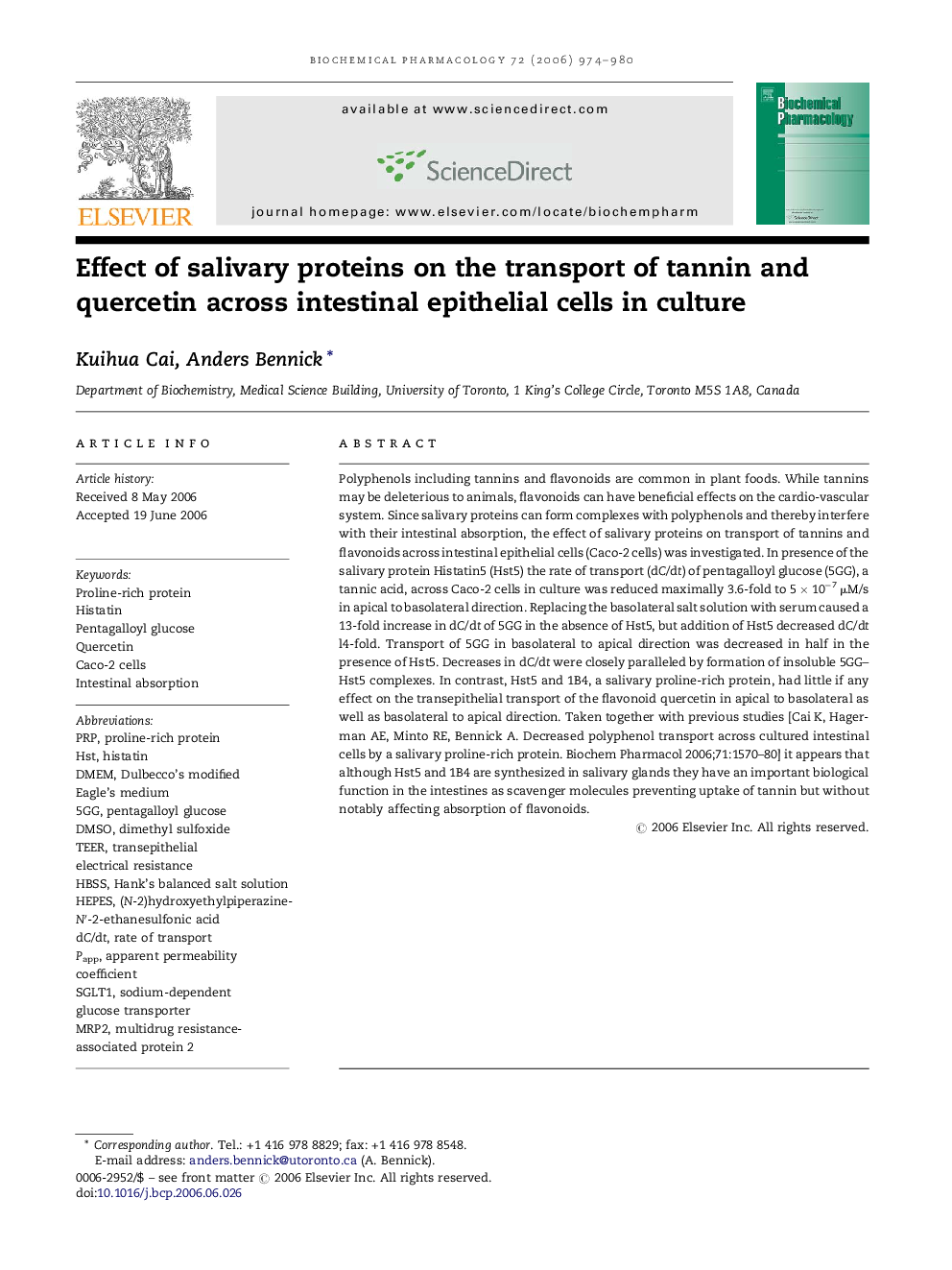| Article ID | Journal | Published Year | Pages | File Type |
|---|---|---|---|---|
| 2515403 | Biochemical Pharmacology | 2006 | 7 Pages |
Polyphenols including tannins and flavonoids are common in plant foods. While tannins may be deleterious to animals, flavonoids can have beneficial effects on the cardio-vascular system. Since salivary proteins can form complexes with polyphenols and thereby interfere with their intestinal absorption, the effect of salivary proteins on transport of tannins and flavonoids across intestinal epithelial cells (Caco-2 cells) was investigated. In presence of the salivary protein Histatin5 (Hst5) the rate of transport (dC/dt) of pentagalloyl glucose (5GG), a tannic acid, across Caco-2 cells in culture was reduced maximally 3.6-fold to 5 × 10−7 μM/s in apical to basolateral direction. Replacing the basolateral salt solution with serum caused a 13-fold increase in dC/dt of 5GG in the absence of Hst5, but addition of Hst5 decreased dC/dt l4-fold. Transport of 5GG in basolateral to apical direction was decreased in half in the presence of Hst5. Decreases in dC/dt were closely paralleled by formation of insoluble 5GG–Hst5 complexes. In contrast, Hst5 and 1B4, a salivary proline-rich protein, had little if any effect on the transepithelial transport of the flavonoid quercetin in apical to basolateral as well as basolateral to apical direction. Taken together with previous studies [Cai K, Hagerman AE, Minto RE, Bennick A. Decreased polyphenol transport across cultured intestinal cells by a salivary proline-rich protein. Biochem Pharmacol 2006;71:1570–80] it appears that although Hst5 and 1B4 are synthesized in salivary glands they have an important biological function in the intestines as scavenger molecules preventing uptake of tannin but without notably affecting absorption of flavonoids.
